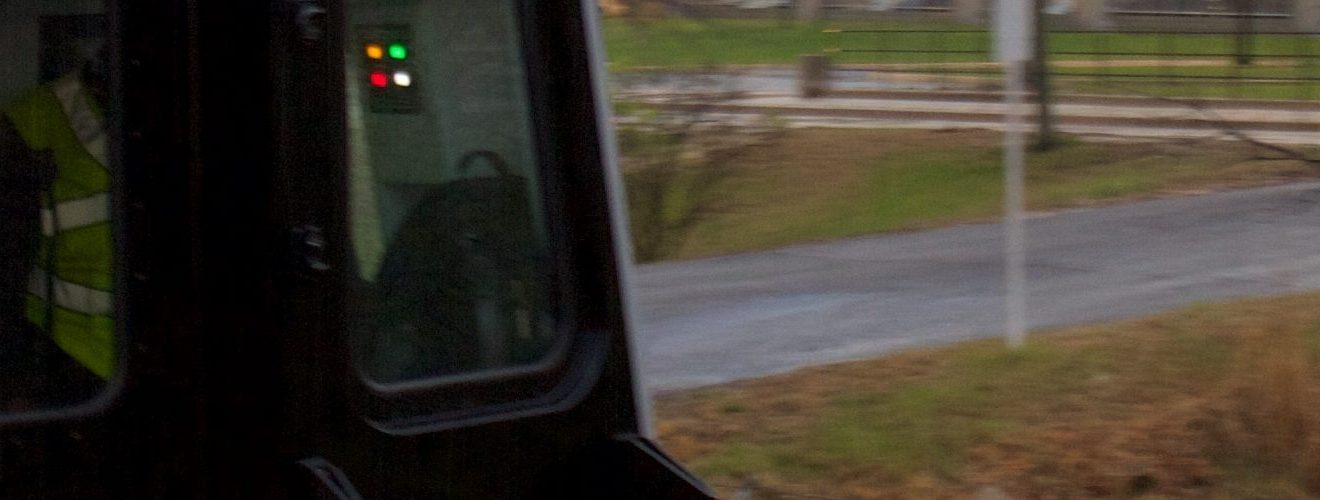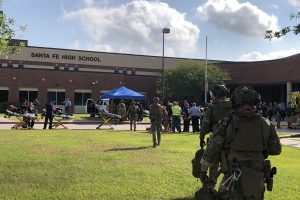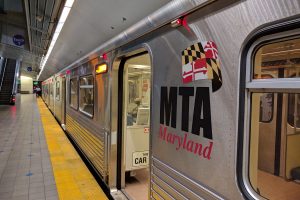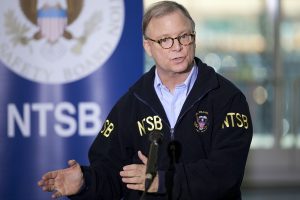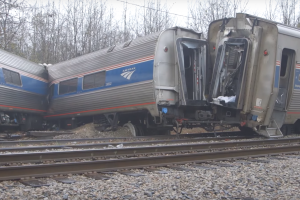Even though Islamic State continues to dominate headlines, a much older terror group, al-Qaeda, and its affiliates may pose a greater direct threat to the United States.
Earlier this month, al-Qaeda in the Arabian Peninsula revealed the latest edition of its “Inspire” propaganda magazine, which contained 18 pages on train derailment operations. The issue detailed ways to build a “derail tool” that would interfere with the train’s movement.
The United States, France and United Kingdom were singled out as targets for such attacks.
New issue of Al-Qaeda magazine Inspire titled 'Train Derail Operations' is doing the rounds on Jihadi channels. pic.twitter.com/9L9kLlqNMd
— F. Jeffery (@Natsecjeff) August 13, 2017
The U.S. maintains more than 140,000 miles of rail. When it comes to metro ridership, it is predictably high in major cities. More than 10 million people take the subway every week in New York City alone, and about 640,000 people ride the Washington, D.C. metro every day.
At the same time, boarding a railroad or subway does not require any security screening.
“This is obviously a major vulnerability to passengers and operators, alike,” Michael Brady, Citadel Fellow of Intelligence and Security Studies, told Grasswire.
He noted that some metropolitan communities have visible law enforcement personnel onsite, but said it was highly unlikely that their presence would deter a motivated individual or group from attempting an attack.
“Security at our railroads, such as Amtrak, is negligible. For example, passengers are not screened before boarding a train. This lack of security is making our passengers vulnerable to attack,” Brady underscored.
He also noted that planned terrorist attacks against critical infrastructure like railways are extremely difficult to detect.
“First, actionable intelligence must be collected from within the cell planning a railway attack. Secondly, security at our railways and subways is nearly nonexistent,” Brady said.
Jeff Beatty, a Lecturer on the National Security faculty of the University of New Haven, who has worked with more than 25 of the largest U.S. transit systems on security, told Grasswire that malicious train derailments are possible, but railways are alert to this possibility. They also have measures in place to determine if a track has been cut instantaneously.
“Nearly all rails have systems in place to determine if there is a break in the track, so these systems can alert people. If the break in the track is made as the train approaches it, there is no time to stop the train, then derailment is a possible outcome,” he said.
Beatty, who was a Delta Force officer and a CIA counter-terrorism center case officer in Europe and the Middle East, said AQAP is directing its followers to attack rail networks after assessing the level of security available.
“The level of security at airports is pretty formidable. While there is security on rail, it is not as extensive as the security in the airport systems,” he said. “If they are looking for some sort of operational success, they have a better chance of that success going against surface transportation.”
Brady, who served as the director of Presidential Emergency Operations Center in the White House under President George W. Bush, noted that it would be difficult to improve railway security throughout the U.S. for two reasons.
“First, implementing screening at railroads and subways will be expensive. Second, screening passengers is likely to bottleneck access to subway trains and thereby be an inconvenience to the millions of passengers who use the service daily,” he said.
Rail systems are typically “open” by allowing all paying passengers in without screening, which comes with its own risks.
US transit agencies each run their own police departments to maintain safety on bus and rail networks. These agencies, in coordination with local partners and state and federal departments, are tasked with ensuring system safety. They may also rely on alert passengers to notify police about suspicious behavior or unattended bags, for example.
Announcements using similar language from the Department of Homeland Security’s “See Something, Say Something” program can typically be seen or heard in many rail stations around the US.
Brady noted, however, that an effective screening process at Amtrak and major metropolitan subway stations should dramatically improve U.S. security, but not guarantee it.
“At a minimum, people should be screened at Amtrak and subway passengers should be required to pass through some ‘basic’ screening machines,” he said.
Today Amtrak police met with local, state and federal security agencies to ensure safety as a top priority at New York's Penn Station. pic.twitter.com/9CmvsMzsYt
— Amtrak Northeast (@AmtrakNEC) June 22, 2017
Beatty underscored that the rail systems are doing everything possible with the funds available.
“They are not naïve to this threat, so they are vigilant, they are making excellent use of the funds available to them to provide security,” he said.
One of the latest major attacks on a subway system took place in Brussels in March 2016, when an ISIS suicide bomber killed 16 people at Maalbeek metro station and left many more people injured.
Even though the rail is a soft target, al-Qaeda hasn’t made more attempts to attack it because it has limited recourses.
“If they could be attacking us every day, don’t you think they would be? Yes, they would. The reason they don’t do that is because they are an entity that has a very limited operational capability,” Beatty said.
He noted that since 9/11, the terror group has been kept on the defensive, and their ability to conduct offensive operations has been minimized.
“You will not defeat al-Qaeda by playing defense and by improving security as the only approach to prevention of attacks. The only way to defeat al-Qaeda is offensively,” Beatty said. “The coast of going after them offensively is actually than cost of trying to protect everything everywhere all the time.”

